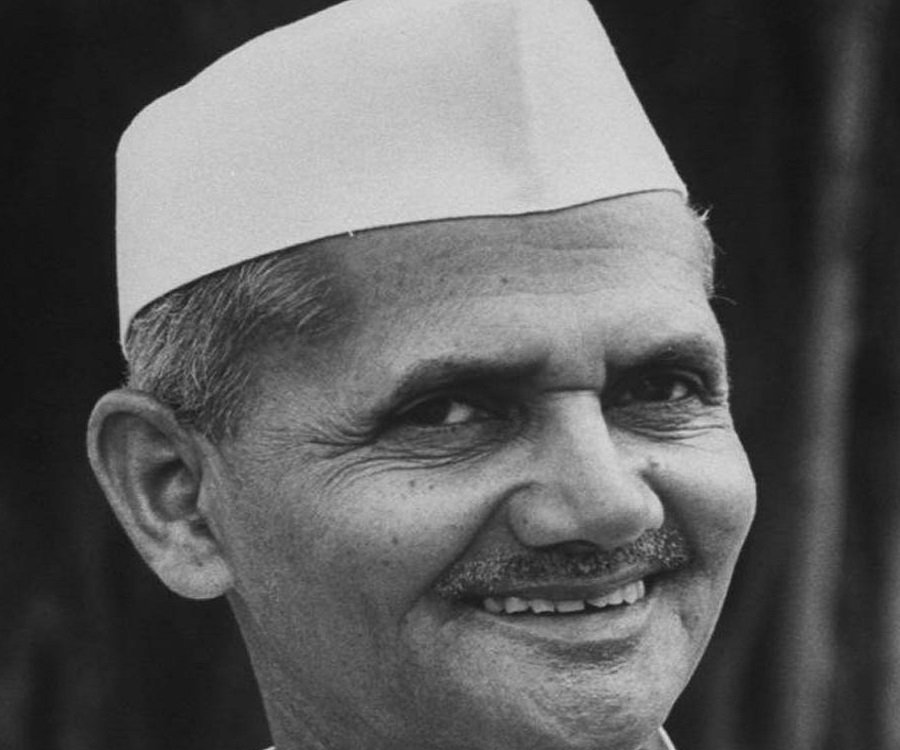
Lal Bahadur Shastri
Biography
Lal Bahadur Shastri was the second Prime Minister of independent India. He took oath after the sudden demise of Jawaharlal Nehru, the first Prime Minister. Relatively new to the high office, he led the country successfully through Indo-Pakistan War in 1965. He popularized the slogan ‘Jai Jawan Jai Kisan’, recognizing the need for self-sustenance and self-reliance as the pillars to build a strong nation. He was a man of exceptional will power that was belied by his small frail stature and soft-spoken manner. He wished to be remembered by his work rather than well-rehearsed speeches proclaiming lofty promises.
Early Life and Education
Lal Bahadur Shastri was born on October 2, 1904, to Ramdulari Devi and Sharada Prasad Shrivastava, in Mughalsarai, United Provinces (modern day Uttar Pradesh). He shares his birthday with Mahatma Gandhi, the father of the nation. Lal Bahadur was against the prevailing caste system and therefore decided to drop his surname. The title "Shastri" was given after the completion of his graduation at Kashi Vidyapeeth, Varanasi in 1925. The title "Shastri" refers to a "scholar" or a person, adept in the "Holy Scriptures".
His father Sharada Prasad, a schoolteacher by profession, passed away when Lal Bahadur was barely two years old. His mother Ramdulari Devi took him and his two sisters to their maternal grandfather, HazariLal's house. Lal Bahadur acquired virtues like boldness, love of adventure, patience, self-control, courtesy, and selflessness in his childhood. After completing his primary education at Mirzapur, Lal Bahadur was sent to Varanasi, where he stayed with his maternal uncle. In 1928, Lal Bahadur Shastri married Lalita Devi, the youngest daughter of Ganesh Prasad. He was against the prevailing "dowry system" and so refused to accept dowry. However, on the repeated urging of his father-in-law, he agreed to accept only five yards of khadi (cotton, usually handspun) cloth as dowry. The couple had 6 children.
Career
Young Lal Bahadur, inspired with the stories and speeches of national leaders, developed a desire to participate in the Indian nationalist movement. He would also spend time by reading foreign authors like Marx, Russell and Lenin. In 1915, a speech of Mahatma Gandhi changed the course of his life and decided to actively participate in India’s freedom struggle.
In 1930, Lal Bahadur Shastri became the secretary of local unit of the Congress party and later the president of the Allahabad Congress Committee. He played a crucial role during the Gandhi’s ‘Salt Satyagraha’. He led a door-to-door campaign, urging people not to pay land revenue and taxes to the British. Shastri was among the prominent Congress leaders who were imprisoned by the British Government in 1942. During the long span in confinement, Lal Bahadur utilized the time in reading the social reformers and western philosophers. In 1937, he was elected to the UP Legislative Assembly.
Jawaharlal Nehru was succeeded by a mild-mannered and soft-spoken Lal Bahadur Shastri on 9 June, 1964. Shastri emerged as the consensus candidate after the sudden demise of Nehru, even though there were more influential leaders within the ranks of Congress. Shastri was a follower of Nehruvian socialism and displayed exceptional cool under dire situations.
Lal Bahadur Shastri, who had earlier suffered two heart attacks, died of a third cardiac arrest on 11 January, 1966. He is the only incumbent Indian Prime Minister to have died overseas. Lal Bahadur Shastri was awarded the Bharat Ratna, India's highest civilian award posthumously in 1966.
